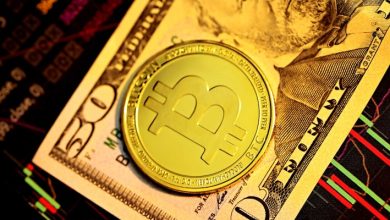The Future of NFTs: Market Trends and Predictions

- The Rise of NFTs in the Digital Art World
- Exploring the Potential of NFTs in Gaming
- NFTs and the Evolution of Collectibles
- Challenges and Opportunities in the NFT Market
- The Role of Blockchain Technology in NFTs
- Predictions for the Future of NFTs in Finance and Real Estate
The Rise of NFTs in the Digital Art World
NFTs have been gaining momentum in the digital art world, revolutionizing how artists create, sell, and collect their work. These unique tokens have opened up new opportunities for artists to monetize their creations in ways that were previously not possible.
One of the key reasons for the rise of NFTs in the digital art world is the ability to provide proof of ownership and authenticity through blockchain technology. This has helped to address issues around copyright and provenance, giving artists more control over their work.
Furthermore, NFTs have enabled artists to reach a global audience and connect directly with collectors, eliminating the need for intermediaries such as galleries or auction houses. This direct relationship has allowed artists to retain a larger portion of the sales proceeds, empowering them financially.
As more artists and collectors embrace NFTs, the digital art market is experiencing a shift towards a more decentralized and inclusive ecosystem. This trend is expected to continue as NFTs become more mainstream and accepted as a legitimate form of art ownership.
Exploring the Potential of NFTs in Gaming
The potential of Non-Fungible Tokens (NFTs) in the gaming industry is gaining significant attention as developers and players alike explore new ways to interact with digital assets. NFTs are unique digital tokens that represent ownership of a particular item or piece of content on the blockchain. In the world of gaming, NFTs have the potential to revolutionize how players buy, sell, and trade in-game items, characters, and even entire virtual worlds.
One of the key advantages of NFTs in gaming is the concept of true ownership. Unlike traditional in-game assets that are owned and controlled by the game developer, NFTs give players full control over their digital possessions. This means that players can buy, sell, or trade their NFT items outside of the game environment, creating new opportunities for value creation and economic empowerment within the gaming community.
Another exciting aspect of NFTs in gaming is the potential for interoperability between different games and platforms. Because NFTs are based on blockchain technology, they can be easily transferred and used across multiple games, allowing players to carry their virtual assets with them as they move between gaming environments. This interoperability opens up a world of possibilities for cross-game collaborations, asset sharing, and unique gaming experiences that transcend traditional boundaries.
As the gaming industry continues to embrace NFTs, we can expect to see new business models and revenue streams emerge. Game developers can use NFTs to create limited edition items, exclusive content, or in-game experiences that are only available to a select group of players. This scarcity can drive up the value of NFTs and create a thriving secondary market where players can buy, sell, and collect rare digital assets.
Overall, the potential of NFTs in gaming is vast and exciting. By leveraging blockchain technology and the principles of decentralization, NFTs have the power to transform the way we think about ownership, value, and creativity in the gaming world. As developers and players continue to explore the possibilities of NFTs, we can expect to see new innovations, collaborations, and experiences that push the boundaries of what is possible in the digital gaming space.
NFTs and the Evolution of Collectibles
NFTs have revolutionized the way we think about collectibles, taking them from physical objects to digital assets that can be bought, sold, and traded on the blockchain. This evolution has opened up new opportunities for artists, collectors, and investors alike.
One of the key advantages of NFTs is their permanence – once a digital collectible is minted as an NFT, it exists on the blockchain forever. This makes them an attractive option for collectors who want to ensure the value and authenticity of their assets over time.
Another exciting aspect of NFTs is their ability to incorporate smart contracts, which can automate royalties for creators every time their collectible is resold. This provides artists with a new stream of income and incentivizes them to continue creating unique and valuable pieces.
As the market for NFTs continues to grow, we can expect to see new trends emerge, such as the tokenization of real-world assets like real estate or luxury goods. This could open up a whole new world of possibilities for collectors and investors looking to diversify their portfolios.
Challenges and Opportunities in the NFT Market
As the NFT market continues to grow rapidly, it is important to consider the challenges and opportunities that come with it. One of the main challenges facing the NFT market is the issue of scalability. With more and more people getting involved in buying and selling NFTs, there is a need for platforms to be able to handle the increased demand.
Another challenge is the issue of copyright and ownership. With digital assets, it can be difficult to prove who the rightful owner is, leading to potential disputes. However, this also presents an opportunity for blockchain technology to provide a secure and transparent way of verifying ownership.
One of the biggest opportunities in the NFT market is the potential for artists and creators to monetize their work in new ways. By tokenizing their creations, they can reach a global audience and receive royalties every time their NFT is sold. This has the potential to revolutionize the way artists are compensated for their work.
Additionally, the NFT market presents opportunities for investors to diversify their portfolios and potentially earn high returns. As the market matures and more people become familiar with NFTs, there is potential for significant growth in the value of certain tokens.
The Role of Blockchain Technology in NFTs
Blockchain technology plays a pivotal role in the development and growth of NFTs. By utilizing blockchain, NFTs are able to provide a secure and transparent platform for buying, selling, and trading digital assets. The decentralized nature of blockchain ensures that each NFT is unique and cannot be replicated or tampered with, adding value and authenticity to the digital asset.
One of the key benefits of using blockchain technology in NFTs is the ability to verify ownership and provenance. Each NFT is linked to a specific blockchain address, providing a clear record of ownership and transaction history. This level of transparency builds trust among buyers and sellers, ultimately driving the market forward.
Additionally, blockchain technology enables smart contracts to be integrated into NFT transactions. Smart contracts are self-executing contracts with the terms of the agreement between buyer and seller directly written into lines of code. This automation streamlines the process of buying and selling NFTs, reducing the need for intermediaries and making transactions faster and more efficient.
Overall, the integration of blockchain technology in NFTs is revolutionizing the way digital assets are bought, sold, and traded. The secure and transparent nature of blockchain, coupled with the use of smart contracts, is propelling the NFT market to new heights. As blockchain technology continues to evolve, we can expect to see even more innovations in the world of NFTs.
Predictions for the Future of NFTs in Finance and Real Estate
Looking ahead, the future of NFTs in finance and real estate is promising. As the technology continues to evolve, we can expect to see a greater integration of NFTs into various financial instruments and real estate transactions.
One prediction is that NFTs will become a common tool for fractional ownership of real estate properties. This will allow investors to own a share of a property through NFTs, making real estate investment more accessible to a wider range of people.
Furthermore, NFTs could streamline the process of buying and selling real estate by digitizing property titles and records. This could reduce the need for intermediaries and expedite transactions, leading to a more efficient real estate market.
In the financial sector, NFTs have the potential to revolutionize asset management. By tokenizing assets such as stocks, bonds, and derivatives, NFTs can make trading and investing more transparent and secure.
Overall, the future of NFTs in finance and real estate looks bright. As more industries adopt this technology, we can expect to see innovative applications that will reshape the way we buy, sell, and invest in assets.


